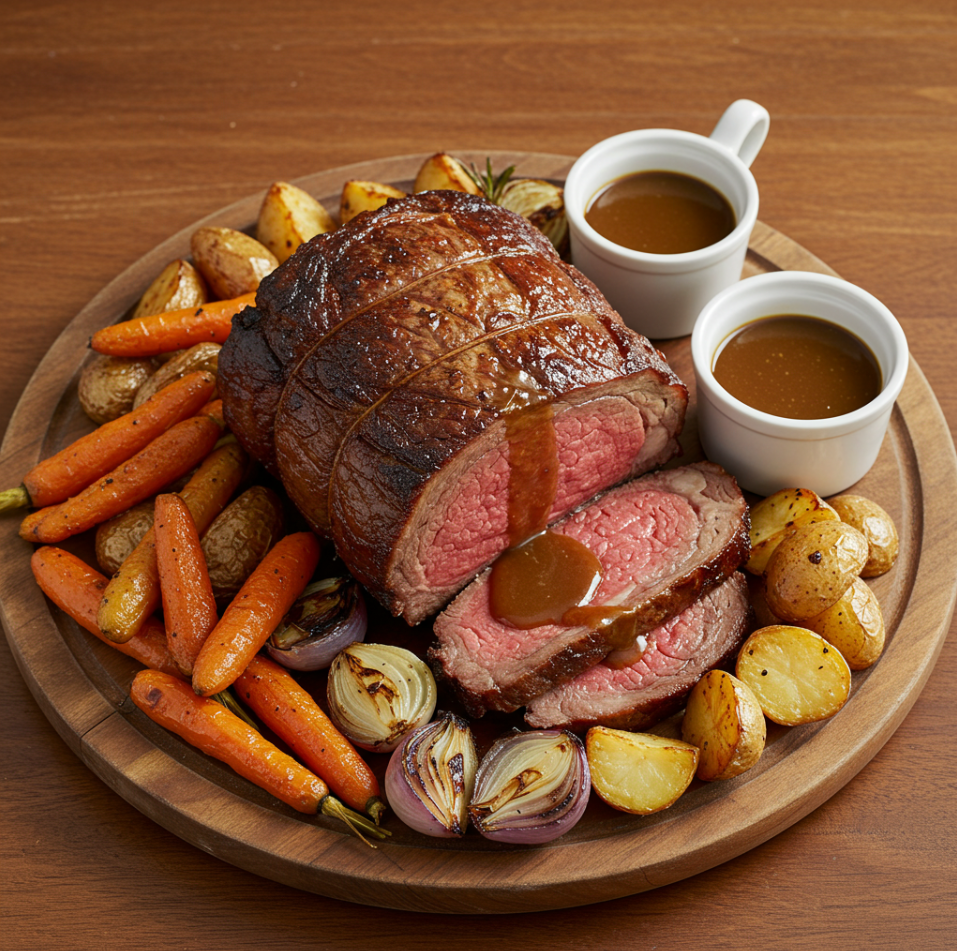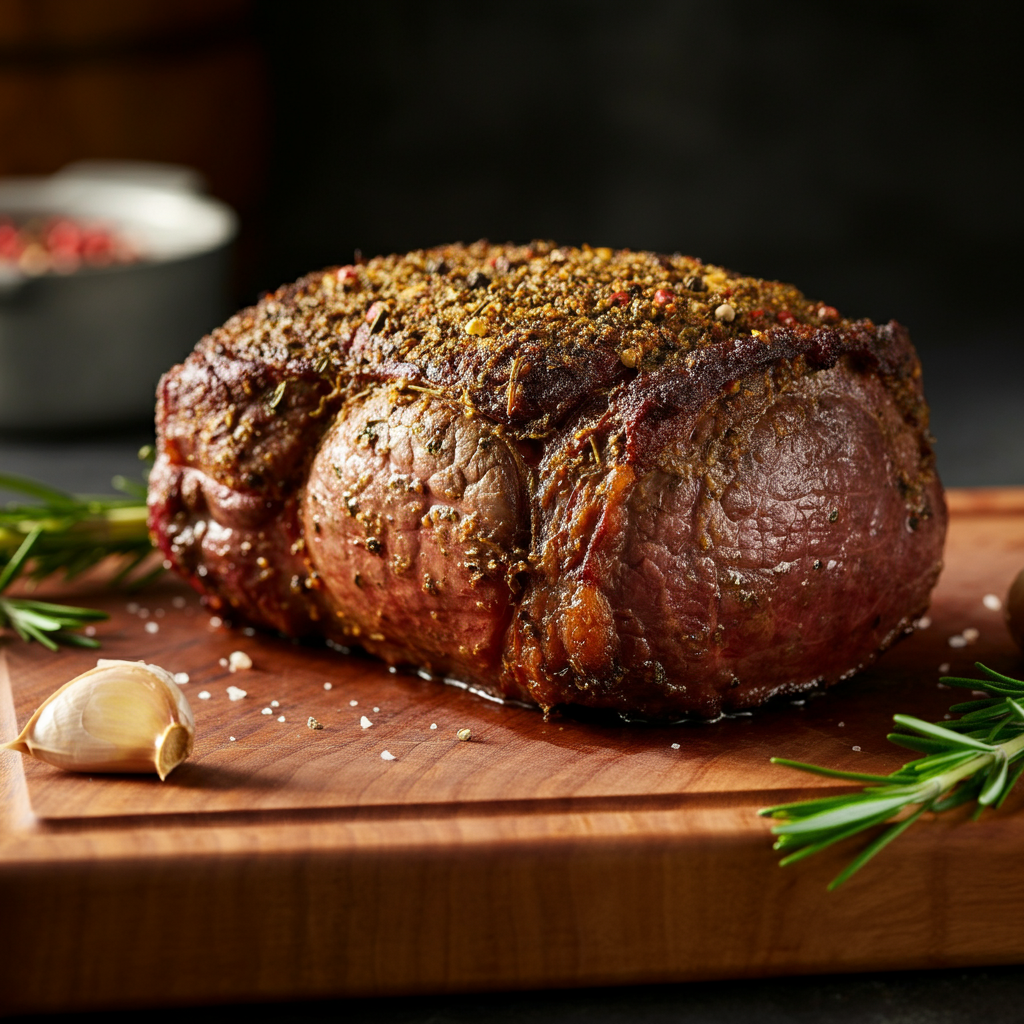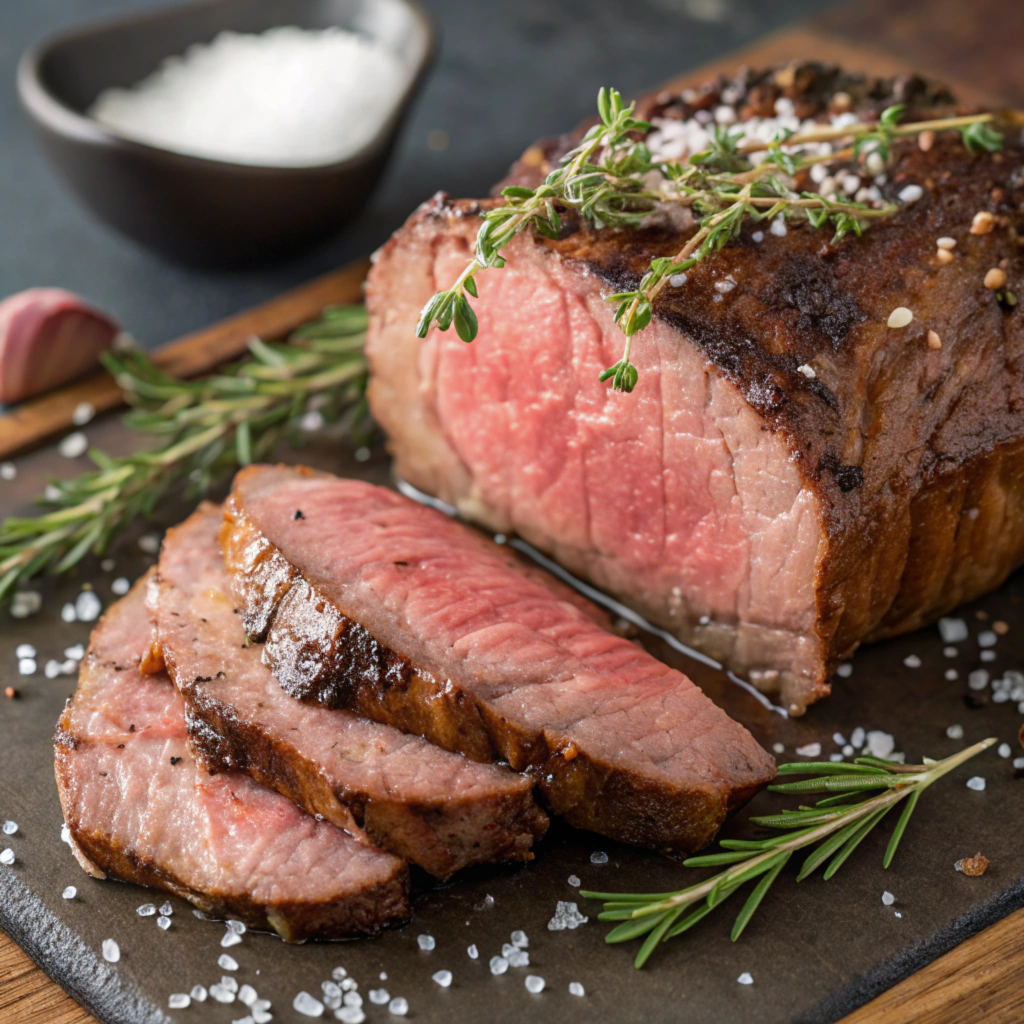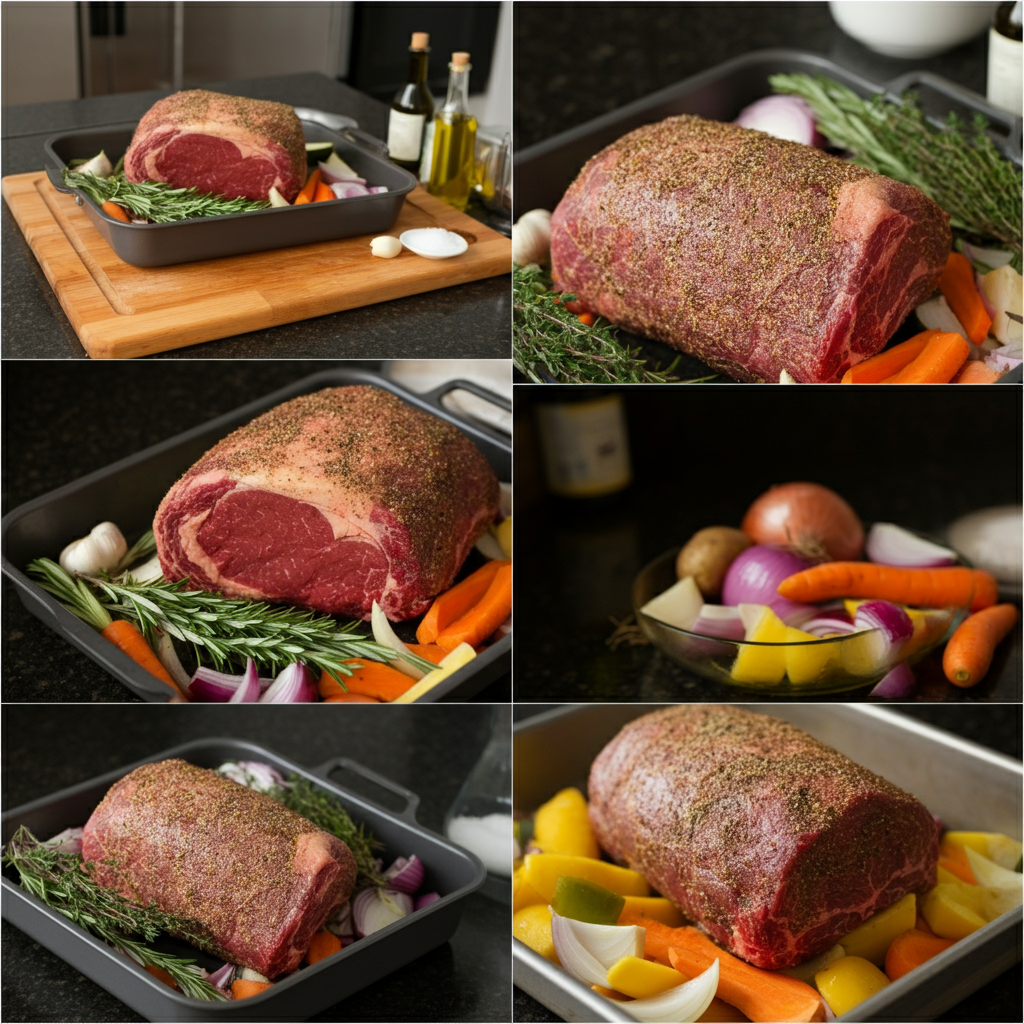Raise your hand if the very thought of a juicy, perfectly cooked ribeye roast makes your mouth water. Let’s be real—nothing says “special occasion” or “next-level dinner flex” like serving up a ribeye roast done right. But wait… does the whole process of buying, prepping, and cooking this king of beef sound a bit intimidating? Don’t sweat it—we’re about to turn you into a ribeye roast mastermind.
From choosing the perfect cut to nailing that rich, buttery flavor, this guide will take you step by step. And hey, we’ll tackle common cooking pitfalls along the way, because nobody’s got time for a disappointing roast. First things first, though—why exactly is ribeye roast the crowned royalty of beef?
What Makes Ribeye Roast the King of Roasts?
Why is ribeye roast every meat lover’s dream come true? Simple. It’s got everything you want on a plate. The flavor? Intense, beefy, and buttery, thanks to that gorgeous marbling of fat. The texture? Tender enough to make you question every steak you’ve had before. This roast doesn’t just sit on your table—it demands attention like it’s the Beyoncé of beef cuts.
The Unique Flavor and Texture of Ribeye
Ever wondered why some cuts of beef feel like chewing an old shoe while others melt in your mouth? It’s all about marbling—the thin streaks of fat that thread through the meat. Ribeye roast brings marbling to the main stage, creating a flavor explosion with every bite. That fat doesn’t just flavor the meat; it bastes it from the inside out as it cooks. And if that doesn’t sound like meat alchemy, I don’t know what does.
Oh, but the texture. You’re looking at beef that’s tender but not mushy, with just the right bit of chew to make you savor every mouthful. Want proof of its supremacy? High-end steakhouses practically swear by ribeye when creating their flagship dishes.
Ribeye vs. Other Cuts: Why It Stands Out
You might be thinking, “Come on, it’s just beef. How much better could it really be compared to other cuts?” Well, here’s the truth bomb—compared to leaner cuts like sirloin or tougher ones like brisket, ribeye is the sweet spot in every way.
Sirloin’s decent, no hate there, but it lacks that luscious fat content. And brisket? Delicious when smoked overnight, sure, but it can’t compare in tenderness. Ribeye roast, on the other hand, is that friend who shows up to the party perfectly dressed and effortlessly cool. It’s both elegant and indulgent, without being extra.
“Choosing ribeye isn’t just a decision—it’s a commitment to deliciousness. This cut isn’t playing around, and neither should you.”
Ingredients Section
Before we even get into the nitty-gritty of cooking, you need to start with the right tools—aka your ingredients. Here’s what you’ll need for a flavor-packed ribeye roast that will leave your guests raving (and coming back for seconds). ❤️
The Basics:
- 1 ribeye roast (5-7 pounds)—Bone-in or boneless, your choice.
- Kosher salt (Don’t bother with regular table salt; kosher’s got the right texture.)
- Freshly ground black pepper (Coarse for a better crust, trust me on this!)
- 3-4 cloves of garlic, minced
- 2 tablespoons fresh rosemary, finely chopped
- 1 tablespoon fresh thyme, finely chopped
- Olive oil (a couple of tablespoons to coat the roast)
Optional Flavor Boosters:
- A splash of Worcestershire sauce, because why not?
- Unsalted butter for basting the roast as it cooks.
- A sprinkle of smoked paprika if you’re a fan of that smoky edge.
Not too complicated, right? This isn’t one of those overly fussy recipes with 27 ingredients and five things you’ve never heard of! Instead, we’re going to focus on enhancing the natural flavor of the ribeye, because a cut this incredible doesn’t need to be drowning in marinades or sauces.
Prepping Your Ribeye Roast Like a Pro
Alright, now that we’ve established ribeye roast as the reigning monarch of meats, it’s time to roll up our sleeves. Prepping this legendary cut isn’t rocket science, but it’s definitely an art. You wouldn’t slap paint on the Mona Lisa, right? Treat your ribeye roast with the same care, and you’ll unlock flavors that’ll have people fighting over the last slice.
How to Choose the Perfect Ribeye Roast
First thing’s first—don’t just grab the nearest roast in the meat aisle and call it a day. You’re not buying socks; you’re buying an experience. If you’re going to spend good money, make sure it’s on quality beef. Look for a roast with excellent marbling—the more fine white streaks of fat running through the meat, the better. That fat is flavor, my friend.
Bone-in or boneless? It’s the age-old question. Bone-in ribeye has the edge on flavor since the bone helps insulate the meat and contribute richness. But boneless is easier to cook evenly and to carve. Neither choice is wrong; it’s like picking your favorite child—it’s all love. ❤️
“Here’s a trick from the pros—ask your butcher! They know exactly which roast will shine for your big dinner plans.”
Essential Tools You Need for Ribeye Perfection
Imagine heading into battle without armor. That’s you if you try prepping and cooking a ribeye roast without the proper tools. What do you need? Not a ton, but here’s the gist.
- Sharp knife (dull knives are a nightmare—sharpen that blade like a samurai).
- Roasting pan with a rack—a rack lifts the meat, ensuring the heat circulates evenly.
- Meat thermometer (seriously, don’t just wing it—no one wants a raw or overcooked roast).
- Basting brush for slathering those juices all over that beautiful meat.
Oh, and pro tip? Have a paper towel handy to pat your roast dry before seasoning. Why? Because moisture on the surface interferes with getting that crispy, golden crust. No surface moisture equals max browning… and max browning equals max flavor.
 Seasoning Secrets to Elevate Your Roast
Seasoning Secrets to Elevate Your Roast
“Just sprinkle on some salt and pepper, right?” WRONG. We’re aiming for greatness, and greatness starts with a proper seasoning game plan. Don’t rush this step—it’s like laying the foundation for a house.
Begin by liberally coating the whole roast in kosher salt and pepper. Go heavier than you think you need, especially if this is a large roast. The salt and pepper are going to crust up beautifully during cooking.
Next comes the flavor bomb. Mix minced garlic, chopped rosemary, and thyme with a little olive oil to create a thick paste. Then rub this herby goodness all over the roast like you’re giving it a luxurious spa treatment. Massage it in, get into every nook and cranny.
Here’s a wildcard move for those who love extra pizzazz—spritz on a little Worcestershire sauce for depth or dust on smoked paprika for subtle heat. These little extras make your ribeye taste like it came straight off a Pinterest dinner board.
“Ribeye roast is like a blank canvas—whatever flavors you throw at it, it’ll amplify and take to the next level. Don’t hold back.”
Cooking Methods That’ll Make Your Ribeye Shine
Now we’re talking! Cooking your ribeye roast is where the magic happens. If prepping was the orchestra tuning up, this is the main performance. But here’s the deal—different methods work for different people. Some prefer classic oven roasting, others swear by the smoky edge of the grill. Me? I say try them all.
Traditional Oven Roasting Made Simple
Oven roasting is the tried-and-true way to cook a ribeye roast. It’s reliable, stress-free, and perfect for first-timers.
- Step 1: Preheat your oven to 450°F. The high temp gives that much-needed initial sear.
- Step 2: Place your seasoned ribeye roast fat-side up on a rack in your roasting pan. Fat-side up lets the juices trickle down into the meat as it cooks—nature’s baste.
- Step 3: Roast at 450°F for 15 minutes to develop a crust, then drop the temp to 325°F for the rest of the cooking time. Aim for an internal temp of 130°F for a perfect medium-rare.
Don’t forget to rest the roast after taking it out of the oven! Seriously, don’t skip this. A 20-30 minute rest lets the juices redistribute, making every bite juicy AF.
“Patience is key. Pulling the roast out too soon is like opening a birthday present early—guaranteed disappointment.”
Smoking Your Ribeye Roast for Unbeatable Flavor
Want to take things up a notch? Break out the smoker. Smoking a ribeye roast adds an earthy, campfire-like flavor that’s impossible to resist. Use wood chips like hickory or cherry for the best results.
- Season your roast as usual, but skip the olive oil rub (the smoker does the heavy lifting).
- Preheat the smoker to 225°F and place your roast on the grates, bone side down if bone-in.
- Smoke the roast until it reaches your desired doneness (again, meat thermometers are critical). Expect this method to take a few hours—it’s a low and slow kind of deal.
“The smoker is how you transform that ribeye from ‘amazing’ to ‘I’m never eating at a restaurant again.’”
Reverse Sear Method: The Game-Changer
For the perfectionists out there, the reverse sear method is the holy grail of ribeye roasting. Here’s how it works:
- First, slow cook the roast at 225°F until it reaches about 10°F below your target doneness.
- Then, crank up the heat—sear the roast in a blazing-hot oven at 500°F (or on a cast iron skillet) for a few minutes. This creates that Instagram-worthy crust without overcooking the inside.
It’s a bit more work, but trust me, the results are chef’s kiss. Think crisp crust meets gloriously tender interior.
Troubleshooting Common Ribeye Roast Problems
Nobody’s perfect, right? Even seasoned cooks have moments where their ribeye roast doesn’t turn out exactly as planned. But guess what? Almost every cooking mishap has a fix. And hey, knowing how to tackle these kitchen headaches will make you feel like a culinary wizard.
Dry Roast? Save It with These Juicy Fixes
Don’t lie—your heart sank when you pulled your roast out of the oven, only to find it dry as a bone. But don’t toss it out just yet! You can salvage it.
First, reach for some beef stock or broth. Slice the roast into thick pieces, place them in a roasting pan, and pour the broth over the meat. Cover it with foil and gently warm it in a 300°F oven. The liquid will bring some much-needed moisture back.
Pro tip? Serve your roast with a rich gravy or au jus. No one will even notice if it’s not as juicy as you intended because they’ll be too busy drooling over that sauce.
“Even dry roasts deserve a second chance—don’t give up on them! A little creativity goes a long way.”
Uneven Cooking? Here’s What Went Wrong
If part of your roast is cooked beautifully and another part is practically mooing, it’s a classic uneven cooking issue. This often happens when the meat isn’t brought to room temperature before cooking. Cold spots in the center can throw off the final result.
What’s the fix? Next time, take the roast out of the fridge at least an hour before cooking—two hours if it’s a big one. This ensures the meat cooks consistently all the way through.
Oh, and make sure your oven or smoker is preheated properly too! Uneven heat is another culprit here. Use an oven thermometer—you’d be surprised how often ovens lie about their actual temperature.
Over-Seasoned? Here’s How to Tone It Down
Mistake #1 when seasoning a roast? Getting too heavy-handed with the salt shaker. But don’t beat yourself up—it happens. If your ribeye came out over-salty, the easiest trick is to pair it with something mild to balance it out.
Serve it with mashed potatoes, creamy polenta, or a side of steamed veggies. Another option? Slice the roast thinly and serve it as part of a sandwich—bread dulls saltiness like a charm.
“Remember, you’re the boss of your kitchen. Taste, tweak, and trust your instincts.”
 Pairing Your Ribeye Roast for the Perfect Feast
Pairing Your Ribeye Roast for the Perfect Feast
Okay, your ribeye roast is now a masterpiece (or on its way to being one). But what’s a star without a supporting cast? The right side dishes and drinks aren’t just extras—they’re what turn your meal into a dining experience.
Best Side Dishes to Complement Ribeye
Think of sides as the backup singers to your ribeye roast. They shouldn’t outshine the main act, but they need to bring their A-game. Here are some winning combos:
- Garlic mashed potatoes: Creamy, buttery, and the perfect sponge for all those ribeye juices.
- Roasted veggies: Go for carrots, Brussels sprouts, or asparagus. Roast them at a high heat for caramelized edges that sing with flavor.
- Creamed spinach: Rich and indulgent, it’s basically a hug in a side dish.
- Yorkshire pudding: Yep, that puffy bread is a classic for a reason—it soaks up the gravy like magic.
Want to add a pop of freshness? A light arugula salad with a lemon vinaigrette can cut through the richness of the roast and balance things out.“
Serving and Storing Leftover Ribeye Roast
Guess what? Leftovers don’t have to be the sad, dry scraps you force yourself to finish. If anything, they’re an opportunity. Ribeye roast leftovers can shine in a million creative ways.
How to Slice Your Roast for Maximum Enjoyment
First things first—before serving your fresh roast or packing leftovers, slicing matters. Always cut against the grain! This breaks down the meat fibers and makes every bite incredibly tender. If you don’t know what “the grain” is, just look for the direction the meat’s natural lines are running, and slice perpendicular to them.
Storing, Reheating, and Repurposing Leftovers
Here’s the rule of thumb for storing leftovers: airtight is right. Wrap your roast tightly in foil or store it in a sealed container, then refrigerate it for up to 3-4 days. Need to keep it longer? Freeze it, but make sure to slice it first. That way, you can thaw only what you need.
When reheating, don’t slap it in the microwave—unless you want beef jerky. Instead, warm it gently in the oven at 300°F with a bit of beef broth or water to keep it moist.
Got a creative streak? Transform leftovers into next-day wonders.
- Beef sandwiches: Thinly sliced ribeye piled on a toasted roll with horseradish sauce? Yes, please.
- Steak salad: Toss those slices onto a fresh salad with blue cheese crumbles and a balsamic glaze.
- Beef hash: Dice the ribeye and cook it up with potatoes, onions, and an egg on top. Breakfast for champions.
“Leftovers aren’t leftovers—they’re just the encore performance.”
Why Ribeye Roast Deserves a Spot on Your Table
Food can be a memory, a celebration, or even a love letter. Ribeye roast isn’t just dinner—it’s a statement. It’s the meal your family will rave about at every holiday for years. It’s the dish that’ll have your guests asking, “Can I get the recipe?”
Whether you’re roasting it for the holidays, slow-smoking it for a summer barbecue, or just treating yourself because, why not? Ribeye roast is pure magic.
And there you have it! Your ticket to ribeye mastery. Now, go on—make that roast, wow your loved ones, and bask in the glory.
More Recipes for Meat Lovers
If you found The Ultimate Guide to Cooking a Ribeye Roast helpful, you’ll love these other delicious and hearty recipes:
- Enjoy the tender and juicy flavors of our Garlic Butter Chicken Bites, a quick and flavorful protein-packed dish.
- Discover the perfect comfort food with our Chicken Broccoli Rice Casserole, ideal for weeknight dinners.
- For a timeless classic, try our Old-Fashioned Meatloaf Recipe, a favorite at family gatherings.
- Add a twist to your holiday table with the savory and sweet flavors of our Marry Me Chicken Pasta, a dish guaranteed to impress.
These recipes are perfect for expanding your repertoire of flavorful and satisfying meals. Give them a try today!


